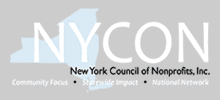The annual Summit onPhilanthropy conference, which is a gathering in New York of 200 top execs from a cross section of nonprofits, corporate social engagement, grantmaking foundations and philanthropists, was held recently.
Some highlights: Ali Velshi gave the keynote address offering his own take (not CNN’s, he made clear) that the Obama administration’s aggressive stimulus response to the economic downturn was being effective, and improvement in the economy was on the horizon, perhaps by late summer.
Taking questions from the audience, Velshi stressed that the focus of the media should still be on the people who need jobs and homes, or need help keeping them. Despite the attention paid to exorbitant executive pay packages, he declared them a “distraction,” that deserved to be visited and fixed, but that current human needs were a priority. Among his observations of particular relevance to this audience: workers laid off from auto manufacturing and other industries should be retrained to fill growing needs in healthcare, especially, and other social sector jobs.
The themes for the day were sounded by Mike Hoffman, Chairman of Changing Our World, Inc. who declared that by coming together and sharing ideas, Summit attendees could explore opportunities for collaboration and innovation, which should emerge from the nonprofit sector in the current economic crisis. Citing a meeting convened by the Bill and Melinda Gates Foundation in Davos, he said philanthropists will increasingly seek to leverage their giving by engaging partners to multiply the effect of their resources.
The program’s focus on the economic state of the nonprofit sector was further developed in the plenary address by Clara Miller, President of the Nonprofit Finance Fund. She warned against accumulating illiquid assets - real estate, restricted endowment - and made the interesting point that fundraising is not the biggest revenue slice in the nonprofit pie - it's actually earned income. She urged the audience to think creatively and strategically (she cited an example of the dance troupe that posts their performances on YouTube, tracks in which city it has the most hits/views, and travels to that city to perform for a live audience as an example of an arts group using a new, free medium to gain exposure).
The Summit program also included three panel discussions. Read more here about the outcomes of the conference.
Subscribe to:
Post Comments (Atom)













No comments:
Post a Comment